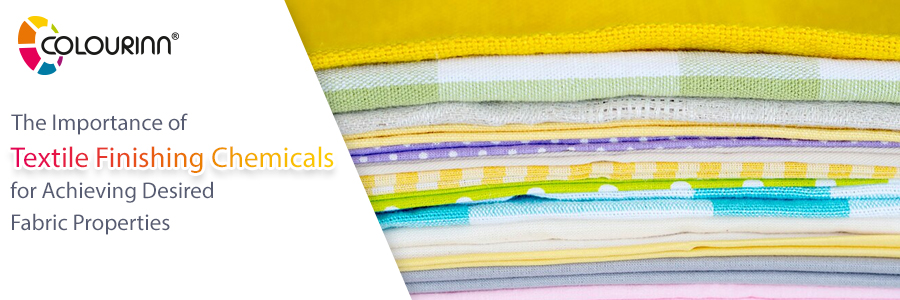What does finishing textiles with chemicals mean?
Chemical finishing of textiles is a process of treating and gathering materials with various chemicals in a motto to achieve the desired design and aesthetics in the fabric. The chemical finishing of materials is a part of the textile finishing process where the emphasis is on chemical substances instead of mechanical finishing.
Chemical finishing involves adding chemicals that are the textile finishing chemicals to textiles to achieve the desired result. Physical properties such as dimensional stability and chemical properties such as flame resistance can be improved with chemical finishing. Normally, the appearance of the textile is unchanged after chemical finishing.
Some important factors need to be considered for the textile finishing chemical manufacturer which is as follows:
- The nature of the textile (fiber composition of the fabric, its development, and its construction).
- The extent of effect and durability that is achieved by applying the product.
- The economics of formulation.
- Procedure restrictions may induce changes in production processes.
Chemical finishing includes processes that change the chemical composition of the fabrics in that they are applied. In other words, the elemental analysis of a fabric treated with a chemical finish will be different from the same analysis done before finishing.
Typically chemical finishing takes place after coloration (dyeing or printing) but before garments are made into garments or other textile articles.
The Importance of Textile Finishing Chemicals for Achieving Desired Fabric Properties:
The most important aspect of the design of a fabric is the type of fiber composition, which may be natural or synthetic. The performance requirements and fabric economics are also essential considerations.
Fabric composition is based on two major factors: availability of machinery and associated process restrictions and compatibility with other components used in finishing processes such as dyeing, spinning, and weaving.
Applications of textile chemical finishing:
- Fabric dyes are used to manufacture many textiles, such as cotton and wool. They help make the fabric color uniform and provide attractive shades to enhance the aesthetic appeal as well as the durability of textiles.
- Water-repellent chemicals are specialized chemicals that are used to impart water resistance onto textiles. This helps prevent wetting due to rain or sweat or spilled liquids, as well as staining and discoloration due to water resistance.
- Antimicrobial agents are used for protecting the textile from viruses and bacteria. Antimicrobial agents are not only used in the industry but also as a cosmetic product to keep your skin clean. In the last 2 years, the demand for antimicrobial agents has expanded because of COVID.
- Softeners are used primarily to improve the feel and appearance of textiles, especially the feel against the skin. The major ingredient in softeners is silicone which has excellent anti-static and soil-release properties.
Conclusion:
Textile finishing chemicals have always been an important component of the textile industry. Different finishing chemicals are used to maintain quality, protect the end-use products and the environment from any damage caused during the process, help remove dirt, and give a smooth finish to the textiles.
Frequently asked questions:
Q.1. Why are textile finishing chemicals important?
Ans: Textile finishing chemicals are essential for achieving the desired properties of fabrics. They help to enhance the durability, comfort, appearance, and functionality of fabrics, making them suitable for a wide range of applications.
Q.2. How are textile finishing chemicals applied to fabrics?
Ans: Textile finishing chemicals can be applied to fabrics through various methods, including padding, spraying, coating, and printing.
Q.3. Are textile finishing chemicals safe?
Ans: Textile finishing chemicals are generally safe when used in accordance with industry standards and regulations. However, some chemicals may pose health and environmental risks if not handled properly. It is important to follow safety guidelines and use protective equipment when working with these chemicals.
Q.4. Can textile finishing chemicals be applied to all types of fabrics?
Ans: Textile finishing chemicals can be applied to most types of fabrics, including cotton, wool, silk, polyester, and nylon. However, the type and amount of chemical used may vary depending on the fabric’s composition and intended end use.

